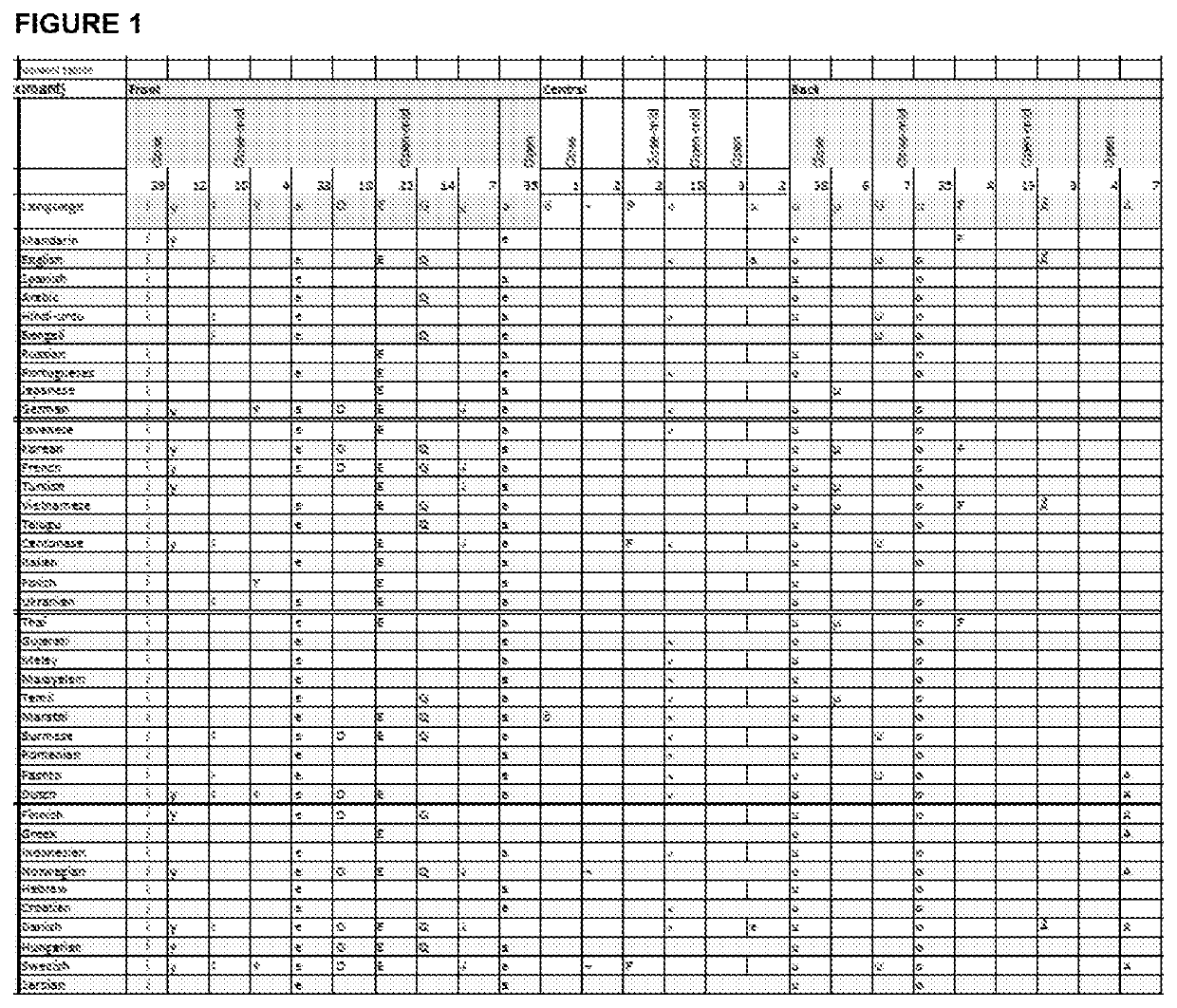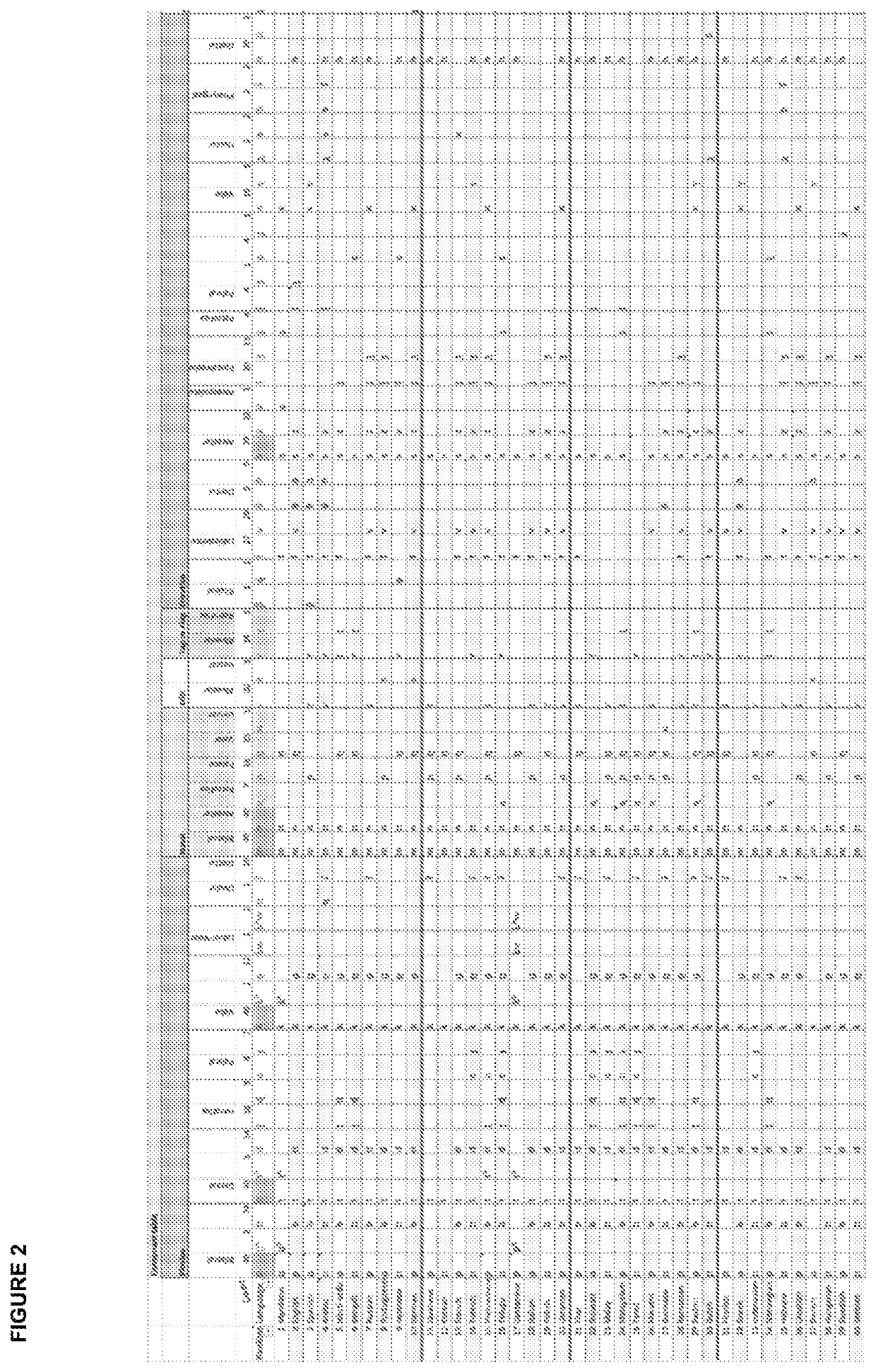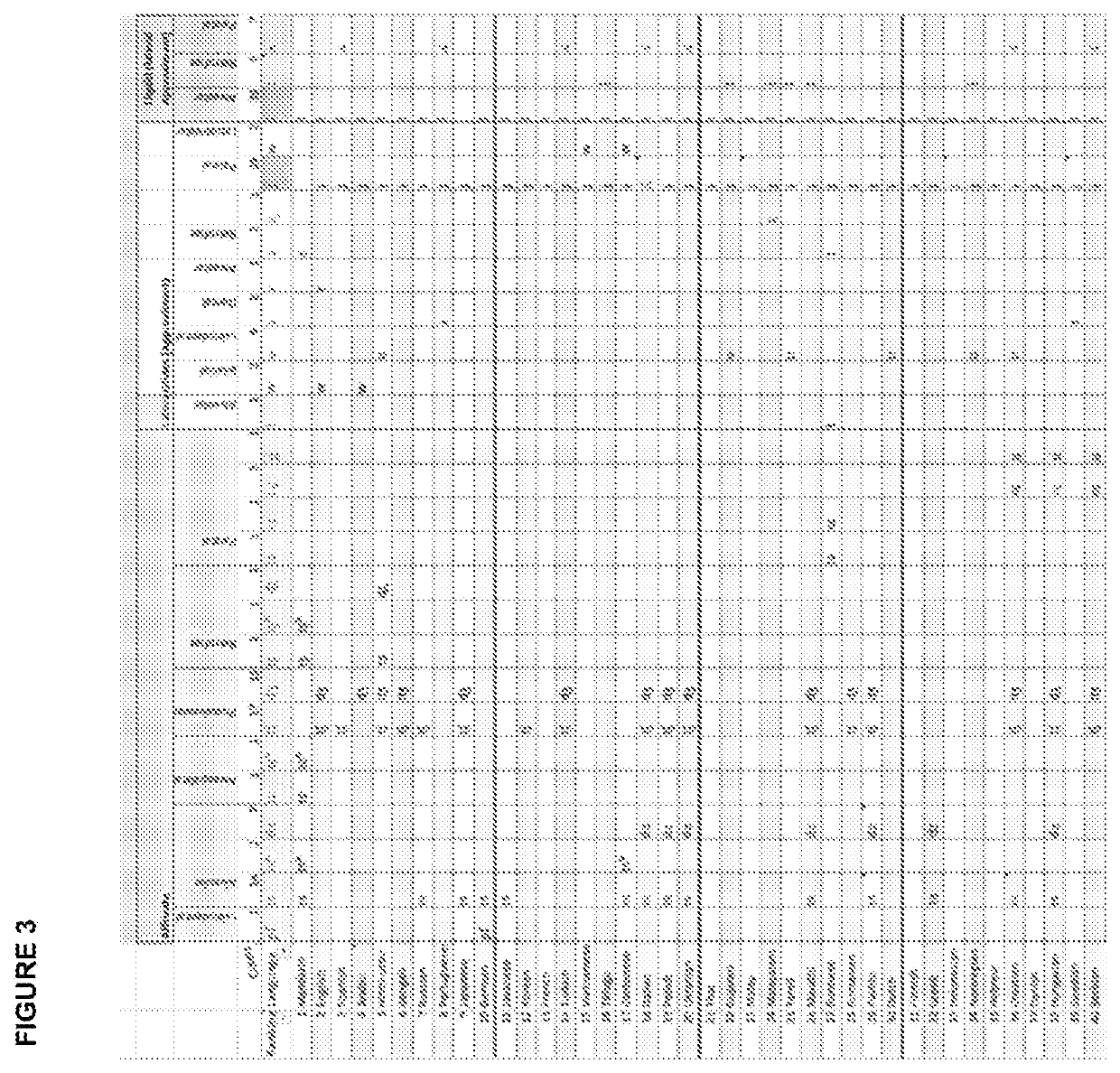Speech discrimination test system and device
- Summary
- Abstract
- Description
- Claims
- Application Information
AI Technical Summary
Benefits of technology
Problems solved by technology
Method used
Image
Examples
Embodiment Construction
[0103]In an embodiment the inventors have provided a test based on the ability of a subject to discriminate between speech sounds, rather than on a subject's ability to identify a speech sound, thereby allowing for a test method and device that may be effectively applied across language barriers. Such a test may never require the subject to identify a speech sound (such as by spelling it out or identifying it as a written word or a word of a language), other than to discriminate which sound is different to another that has been presented.
[0104]In an embodiment the invention is based on measuring the ability of a subject to correctly discriminate the odd speech sound present in sequence of other speech sounds. For example, pairs of speech sounds may be presented in sequential triplets, in which a first speech sound is presented once and a second speech sound is presented twice (such that the first speech sound is the ‘odd one out’). For example, if two speech sounds presented are [aj...
PUM
 Login to View More
Login to View More Abstract
Description
Claims
Application Information
 Login to View More
Login to View More - R&D Engineer
- R&D Manager
- IP Professional
- Industry Leading Data Capabilities
- Powerful AI technology
- Patent DNA Extraction
Browse by: Latest US Patents, China's latest patents, Technical Efficacy Thesaurus, Application Domain, Technology Topic, Popular Technical Reports.
© 2024 PatSnap. All rights reserved.Legal|Privacy policy|Modern Slavery Act Transparency Statement|Sitemap|About US| Contact US: help@patsnap.com










